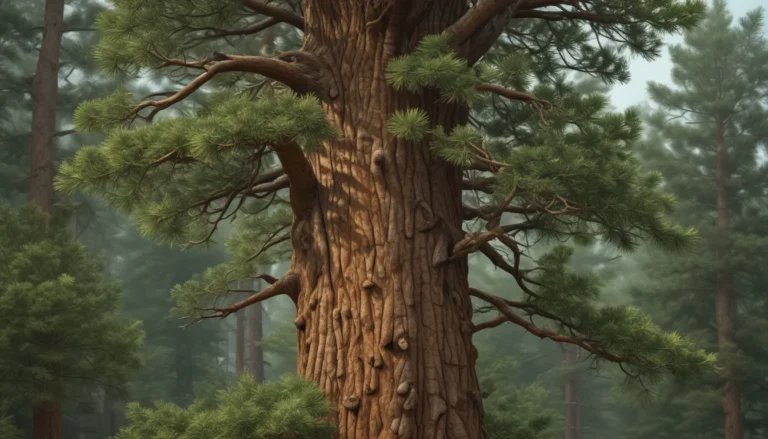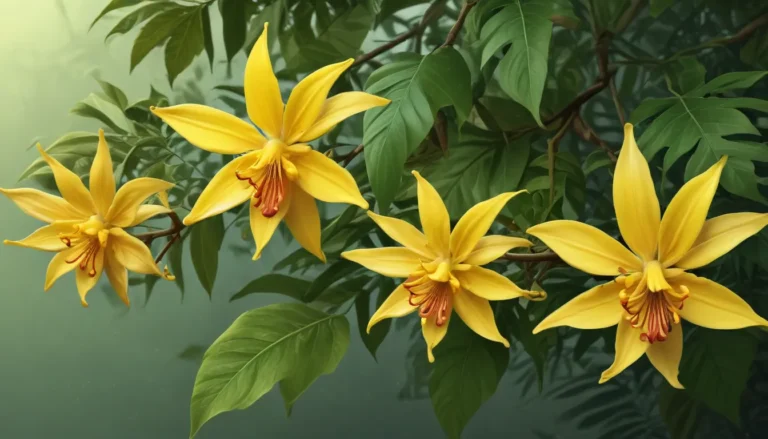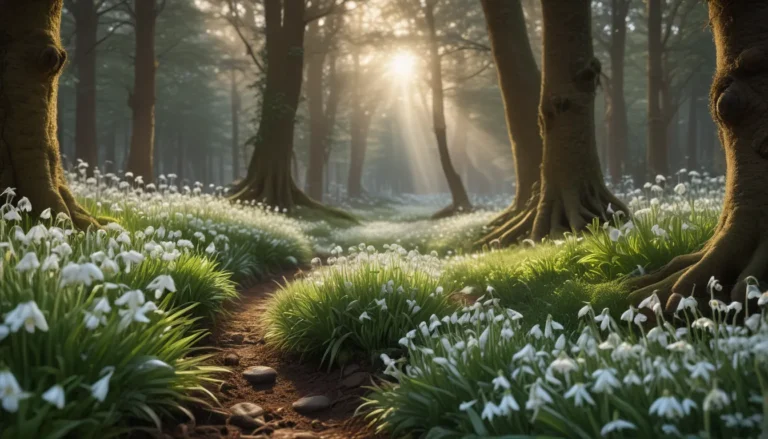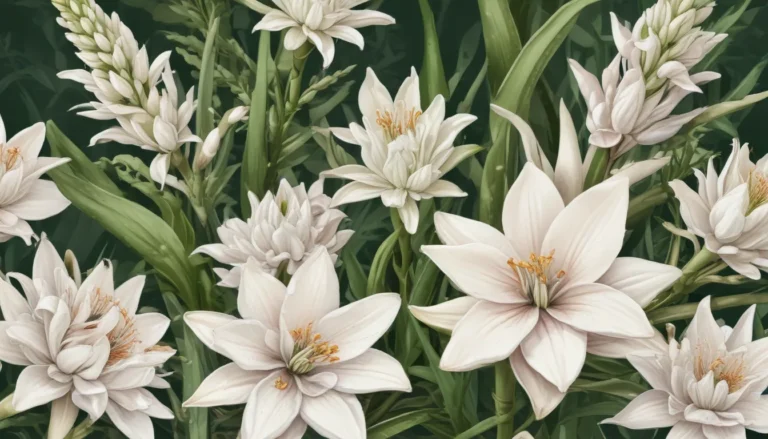The pictures we use in our articles might not show exactly what the words say. We choose these pictures to make you interested in reading more. The pictures work together with the words but don’t take their place. The words still tell you the important facts.
Are you ready to embark on a journey into the captivating world of swamp milkweed? Join us as we uncover the enigmatic secrets of this remarkable plant and explore its fascinating characteristics. From its role in supporting monarch butterflies to its medicinal properties, there is much to learn about this often overlooked botanical treasure. So, grab your gardening gloves and get ready to be inspired by the wonders of swamp milkweed!
A Garden of Vibrant Beauty and Buzzing Life
- Swamp milkweed is a butterfly and bee magnet, with beautiful flowers that attract colorful butterflies and provide essential nectar for bees, making it a must-have for a vibrant and buzzing garden.
- Not only is swamp milkweed a stunning addition to your garden, but it also plays a crucial role in supporting monarch butterflies, controlling erosion, and requires minimal maintenance, making it a resilient and beneficial plant to have.
Attracts Colorful Butterflies
Swamp milkweed, also known as Asclepias incarnata, is a beautiful perennial plant that attracts a wide variety of butterflies, including monarchs, swallowtails, and fritillaries. Its vibrant flowers and nectar-rich blooms make it a popular choice for butterfly gardens.
Native to North America
Swamp milkweed is native to North America and can be found growing in wetlands, marshes, and along the edges of streams and ponds. It is well-adapted to these moist environments and is often used for wetland restoration projects.
Important Source of Nectar for Bees
In addition to attracting butterflies, swamp milkweed is also a valuable source of nectar for bees. Bees play a crucial role in pollinating plants, and having swamp milkweed in your garden can help support their population and contribute to a healthy ecosystem.
Medicinal Properties
Swamp milkweed has long been used in traditional medicine for its various medicinal properties. It has been used to treat respiratory ailments, digestive issues, and even as a natural remedy for skin conditions.
Drought Tolerant
Despite its preference for moist environments, swamp milkweed is surprisingly drought tolerant once established. It has deep roots that allow it to access water from lower soil layers, making it a resilient plant even in dry periods.
Host Plant for Monarch Butterflies
Swamp milkweed is a crucial host plant for monarch butterflies during their caterpillar stage. Monarchs lay their eggs exclusively on milkweed plants, and the caterpillars rely on the leaves of swamp milkweed as their primary food source.
Long Blooming Period
Swamp milkweed has a relatively long blooming period, usually from June to September. This extended blooming time provides a consistent source of nectar and pollen for butterflies and bees, ensuring their continued presence in your garden.
Attractive Foliage
Not only does swamp milkweed produce beautiful flowers, but it also has attractive foliage. The leaves are long and lance-shaped, with a deep green color and a slightly fuzzy texture, adding interest to your garden even when the plant is not in bloom.
Can Help Control Erosion
Due to its extensive root system, swamp milkweed can help control erosion in wetland areas. The roots bind the soil together, preventing it from being washed away by heavy rains or water currents, making it an excellent choice for stabilizing soil near water bodies.
Low Maintenance
Swamp milkweed is a low-maintenance plant once established. It is relatively resistant to pests and diseases and requires minimal pruning or fertilization. Simply provide it with the right growing conditions, and it will thrive in your garden.
Conclusion: The Beauty and Benefits of Swamp Milkweed
In conclusion, Swamp Milkweed is a fascinating and enigmatic plant that offers a multitude of benefits to both its environment and those who appreciate its beauty. From its vibrant flowers that attract butterflies and bees, to its ability to thrive in wetland habitats, this plant is truly unique. The milkweed’s role in the life cycle of monarch butterflies also adds to its allure and ecological importance. Its medicinal properties and potential use in herbal remedies further showcase its versatility. Whether you’re an avid gardener or simply appreciate the wonders of nature, including Swamp Milkweed in your landscape is a decision that will surely reap numerous rewards.
FAQs: Your Questions Answered
- What is Swamp Milkweed?
-
Swamp Milkweed, scientifically known as Asclepias incarnata, is a perennial flowering plant native to North America. It is part of the milkweed family and is characterized by its pink or purple flowers and tall stems.
-
How does Swamp Milkweed benefit the environment?
-
Swamp Milkweed is a vital plant for pollinators, especially butterflies and bees. Its nectar-rich flowers attract these insects, aiding in their survival. Additionally, it serves as a host plant for monarch butterflies, providing a crucial habitat for their larval stages.
-
Can Swamp Milkweed be grown in wetland habitats?
-
Yes, Swamp Milkweed thrives in wetland habitats, such as swamps or marshes. Its ability to tolerate moist soil conditions makes it an excellent choice for these areas.
-
Are there any medicinal properties associated with Swamp Milkweed?
-
Yes, Swamp Milkweed has been used in traditional herbal remedies for various conditions, including respiratory issues and digestive disorders. However, it is important to consult with a healthcare professional before using it for medicinal purposes.
-
How can I incorporate Swamp Milkweed into my garden?
-
You can incorporate Swamp Milkweed into your garden by planting it in areas with moist soil or in rain gardens. It pairs well with other native perennials and attracts beneficial pollinators to your garden.
-
Is Swamp Milkweed easy to grow?
- Yes, Swamp Milkweed is relatively easy to grow. It prefers full sun to partial shade and well-draining soil. Once established, it requires minimal maintenance and can tolerate some drought conditions.
If you're fascinated by the enigmatic world of plants, why not explore more captivating facts about other botanical wonders? Discover the charming perennial plant Yellow Loosestrife, with its vibrant blooms and intriguing characteristics. Dive into the enchanting realm of butterfly gardening, where you can create a haven for these winged beauties. And don't miss out on learning about the incredible Compass Plant, one of North America's most remarkable native plants. Each of these topics offers a wealth of knowledge and inspiration for nature enthusiasts and curious minds alike.
Our commitment to delivering trustworthy and engaging content is at the heart of what we do. Each fact on our site is contributed by real users like you, bringing a wealth of diverse insights and information. To ensure the highest standards of accuracy and reliability, our dedicated editors meticulously review each submission. Trust in our commitment to quality and authenticity as you explore and learn with us.
By delving into the captivating world of swamp milkweed and other botanical wonders, you can not only enrich your knowledge but also contribute to the preservation and appreciation of these remarkable plants. Happy gardening and exploring!






